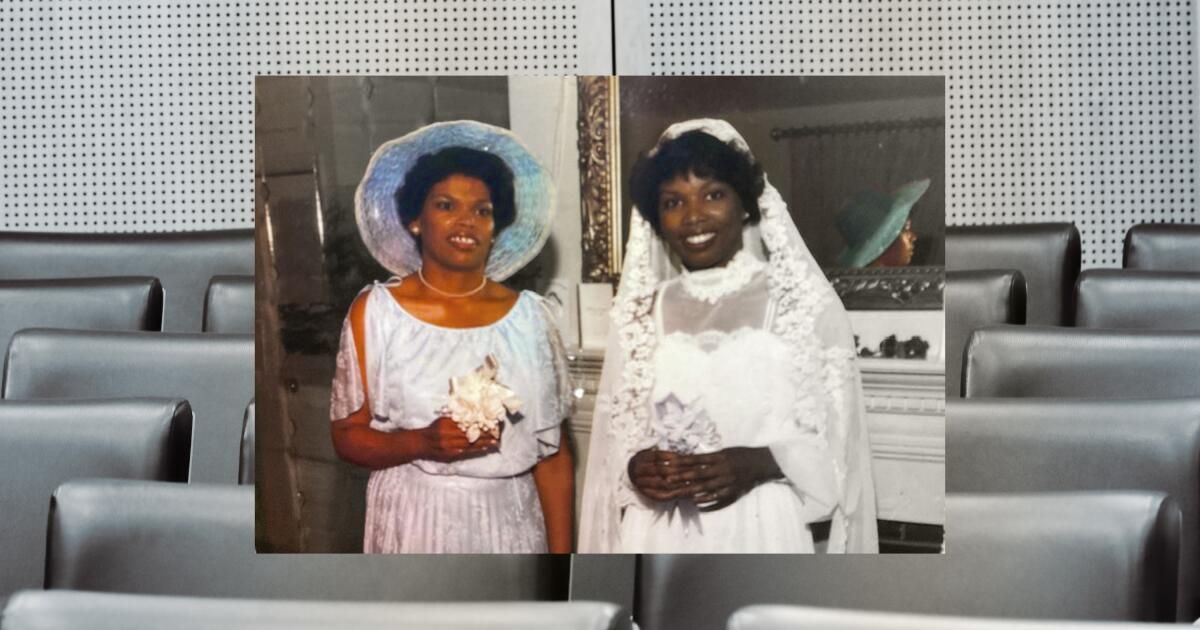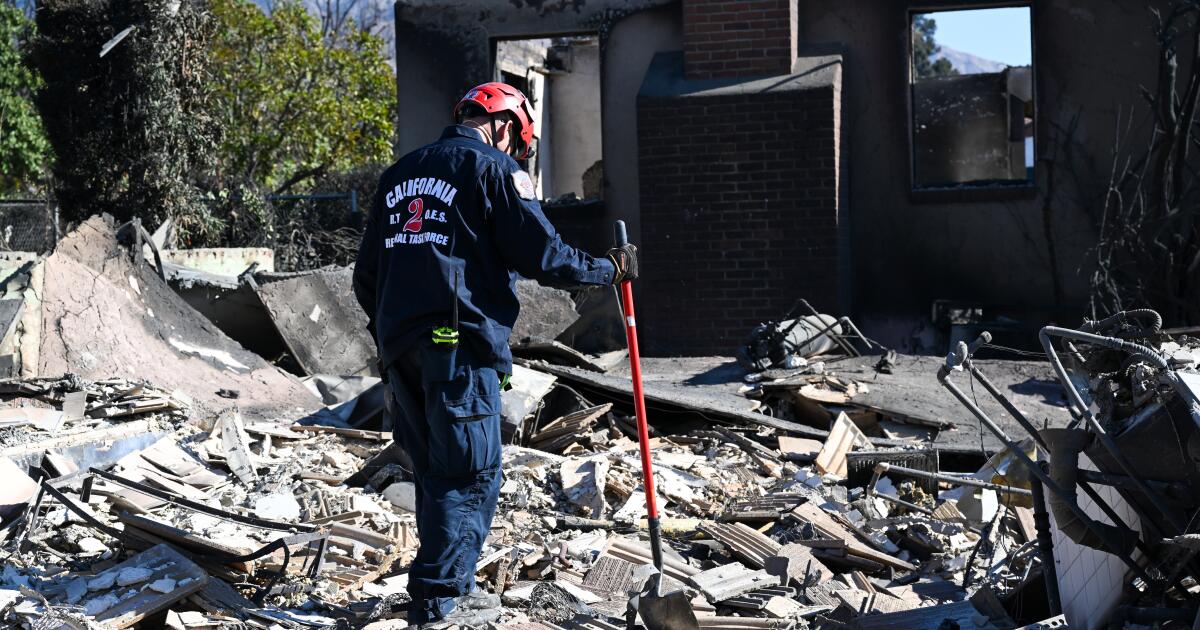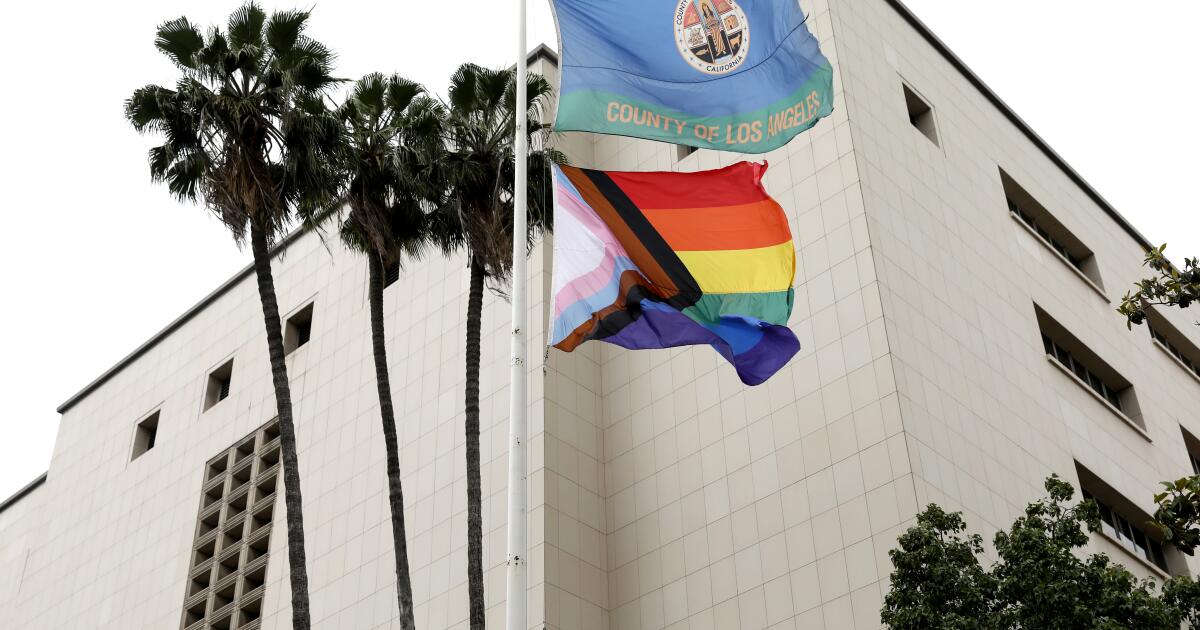I am looking at the man accused of raping and killing my sister, Vickie, in August 1979. I was 28 years old.
I can see it, but he can't see me. We are connected by video. He is dressed in an orange monkey, sitting in a waiting room in the Maryland prison waiting for his bail audience to begin. I am alone in a hotel room, on a business trip to New York.
I am surprised by his appearance. He was 18 in 1979. Now, 62, it seems old, agitated, with his eyes thrown. He is black, like me, like Vickie.
I can feel that my chest squeezes, sweat accumulating on my forehead. Vickie's death left me with my own Boogeyman. A faceless presence never away from my side. I saw real and imagined threats everywhere. My life was bifurcated in the before and the after. I arrived Survivor's luggage: sadness, guilt and fear.
And now he is there: Boogeyman has a face and a name: Andre Taylor. And, most importantly, genetic markers. He went behind the DNA when he raped Vickie brutally, shot him in the head and left his body next to a rural road in Charles County, Maryland. For four decades, the police did not arrest. His murder joined the shocking number of women and black girls killed or missing in the United States.
My younger sister, Kay, now a deputy director retired from California, continued to press for answers. Instead, I chose to focus on supporting Vickie's son, who was 8 years old at the time of his death, to raise money for the Vickie Belk scholarship foundation launched by our family church and speaking against armed violence.
Then, in mid -2023, the improved DNA technology combination, the determination of Kay and the new leadership in the department of the Charles County Sheriff and the Maryland State Prosecutor's Office, there was a great break in the case.
A DNA sample raised from Vickie's clothes coincided with a profile in the national database. At that time, Taylor lived in a convalescent home in Washington, DC. One of her legs had been amputated and was using a wheelchair. He did not have a known relationship with Vickie. What I had was a long and violent criminal history and jail. When the DNA party was confirmed, it was accused and arrested.
That led us to the bail audience.
Memories return back. The last time I saw Vickie was my wedding day. I was stopped by my side on the altar with a blue lady dress and a matching hat. Three weeks later, he would return to the same altar, sobbing on his lifeless body that is in a coffin. He wore the same blue dress. For weeks, unopened wedding gifts were stacked in the corner of our house.
I listen while the public defender explains why the judge must give Taylor's bond. A compassion flicker moves me. I spent years working for the reform of criminal justice. I know that the system often fails poor people, especially those with disabilities and color communities. I have been a strong public defender of restorative justice and a critic of mass imprisonment.
“Judge, look at it,” says the public defender. “Not anywhere. It is not a risk of escape.”
Leave to the side of compassion when the prosecutor shares Taylor's version of how his DNA was put in Vickie's clothes.
He said a friend named Mikey appeared at home with a hysterical vickie in the back seat of his car. Taylor's story was that he begged for his life, offering to have sex if they let her go. He said Mikey left with Vickie, alive, and when he asked later, Mikey said: “Well, man, you know he had to do what he had to do.”
I start crying.
The prosecutor Salta, pointing out the defensive injuries in Vickie's body while fighting for his life and lost, the presence of Taylor's DNA in his panties. And then this: when Taylor was arrested, says the prosecutor, he told the officers that he would have recruited his brothers to help him flee if he knew that the police would come for him.
“It is a risk of leakage and must be retained without bail,” insists the prosecutor.
“Nagado de Bail!” Judge thunders.
:
A year and a half later, in the summer of 2024, I traveled east from California again, this time for Taylor's trial. Every day, our family and friends of the former neighborhood and beyond are in the Maryland court room or approach. But all your love and support is not enough to reduce my fear of what will come.
The jury selection is a reminder of how much violence is rooted in American life. The judge asks the diverse group of almost 100 possible jurors to stand up if he knows someone who was injured or killed by armed violence. Only five remained seated. When he asks about sexual violence, most women are. Many accept the judge's offer to be excused if they feel that they cannot be impartial. I begin to worry if a woman is left to serve. Finally, the Prosecutor's Office and Defense agree on four women and nine men (including an alternative). They are mostly colored people.
The halls clear every morning when Taylor is taken to court. In person, it seems small, harmless. I find myself wishing to know how to hate better, but empty me. All I can gather is curiosity, loss and pain, wondering what had happened to him in his first 18 years of life.
Kay is one of the first calls to the witness post by the prosecutor. She must formally identify Vickie in the photos of the crime scene. Several family members choose to leave the courtroom. I stay and see while the jury gasps the images or look the other way. Taylor feels still, as if the evidence had nothing to do with him.
We listen to the emotional testimony of the man who had found Vickie in the forest. Now a grandfather was 15 years old, riding his bicycle near his house, when he saw his body. He had shared with the family how the image pursued him for years.
When the defense begins, I begin to direct my bitterness less to Taylor and more to his lawyers. It is a team of two people headed by the main public defender, a black woman, with a white woman in the second chair. I know they are doing their job, but their competition turns my stomach and my heart upside down.
Taylor's lawyer asks the forensic doctor who made the original autopsy if it is possible for Vickie to commit suicide or if his blunt vaginal injuries could be by consensual sex. Absolutely not, says the Forensic doctor. She supports her evaluation that Vickie's death was a homicide, and that she was sexually violently assaulted.
Next, Taylor's lawyers take a page of the OJ Simpson plays and spend hours trying to dispute the collection and validity of DNA's evidence.
But in the end, Taylor's own condemn it. The Prosecutor's Office reproduces the entire two -hour video of its arrest interview. For almost 60 minutes, he denies having some contact with Vickie, and then admits what prosecutors will call “actions that were equivalent to rape.”
“I had sex with her to calm her. She was well dressed in expensive and beautiful shoes. I remember those shoes. Dressed as if she worked in an office or something.”
He inactive: “She was alive when I ended her.”
In the final argument, the prosecutor connects the points. There was no mikey. The whole evidence points to the fact that Vickie was kidnapped, taken to the forest to a few miles where Taylor lived, sexually attacked and killed. DNA implies Taylor and Taylor alone.
The jury takes two hours to return with a verdict: guilty. As they leave the courtroom, several of them make visual contact. In silence give “thank you.”
:
A month later, I return to the Court Chamber for Taylor's judgment. Family members have the opportunity to make statements.
We are told that we direct our comments to the judge, not Taylor. Vickie's son speaks first. I keep my short comments, remembering the brutality of the crime, how scared Vickie and how Taylor had not shown remorse for his actions.
When my younger sister's turn is, he first apologizes to the judge for ignoring his instructions, then he turns to Taylor, and says what he would like to have had the nerve of saying: “You are a piece of garbage.” She accepts the judge's reprimand and leaves the courtroom.
Taylor is sentenced to life imprisonment. “My actions today will not bring Vickie back,” says the judge. “It will probably not even provide a closure. But I hope you provide some sense of justice and peace.”
Maybe one day he will. But not this day. I leave the court room feeling the loss of a sister, without justice, without peace.
Judy Belk, former president and executive director of California Wellness Foundation, is a taxpayer frequent to The Times. She is working in a personal essay book on racial justice and social change.












